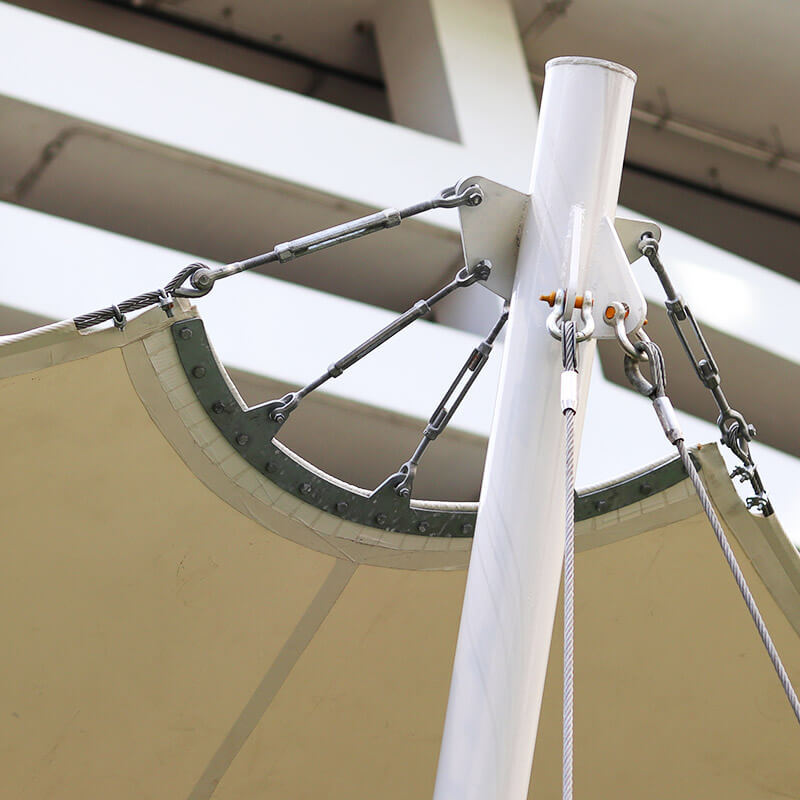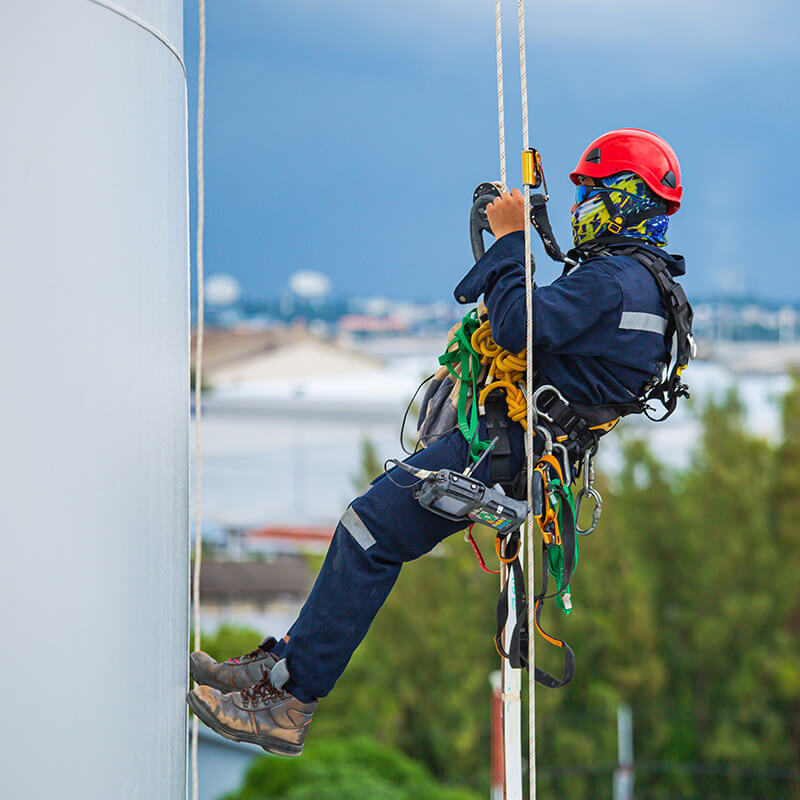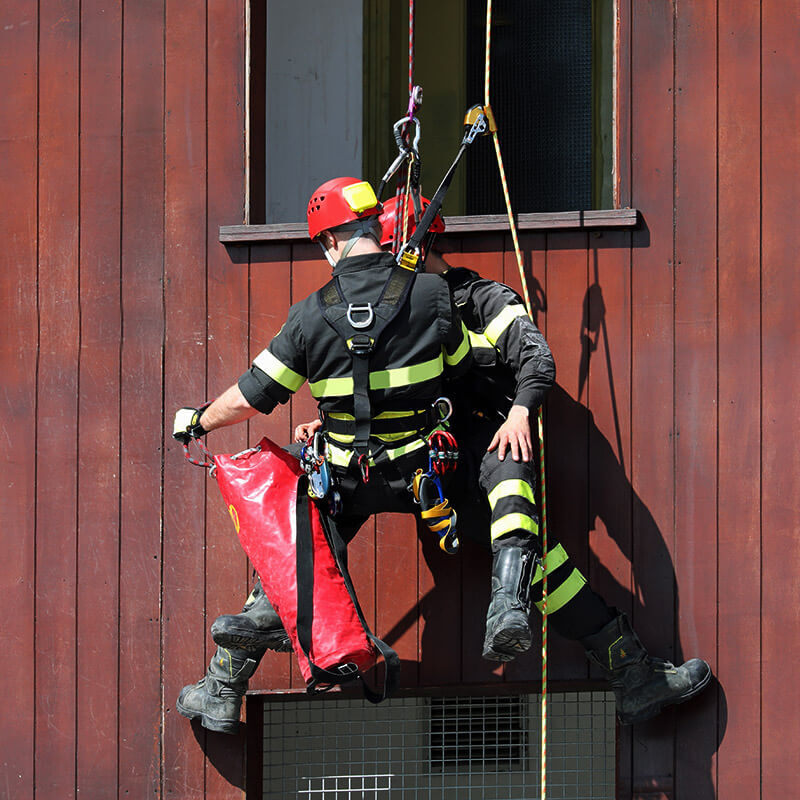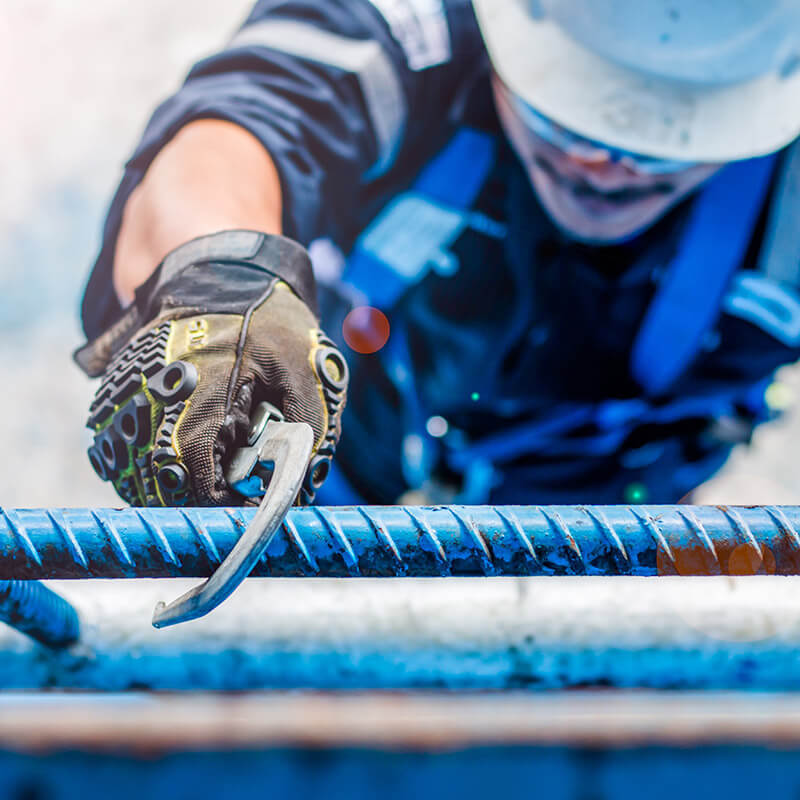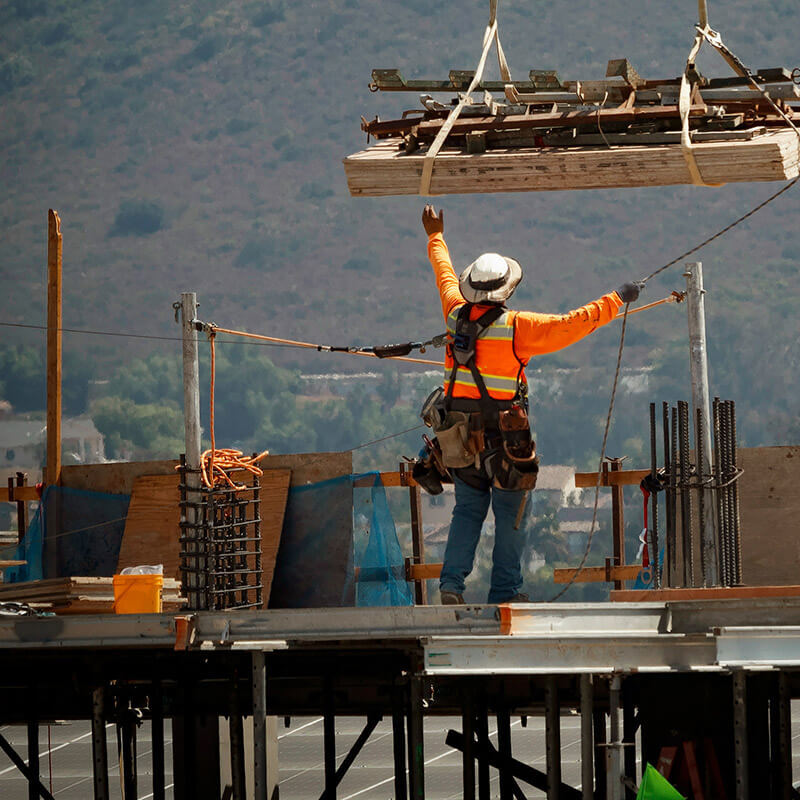What are the five levels of fall protection?
In high-risk industries, fall protection is essential for keeping workers safe at height. OSHA identifies falls as one of the leading causes of workplace fatalities, especially in construction and general industry. The fall protection hierarchy offers a structured, step-by-step approach to minimizing risk—from eliminating hazards entirely to managing them through training and procedures.
Key Takeaways
- The 5 levels of fall protection prioritize prevention over response.
- Hazard elimination is the most effective strategy; administrative controls are the least.
- Following OSHA and ANSI standards helps maintain compliance and reduce injuries.
- A complete fall protection program integrates engineering controls, equipment, and training.
The Fall Protection Hierarchy
The fall protection hierarchy helps employers and safety managers choose the most effective form of protection for each situation. It follows this order of priority, as recognized by OSHA and ANSI Z359 standards:
1. Hazard Elimination
This is the most effective level of fall protection. It involves redesigning tasks or environments to remove the fall hazard altogether. Examples include relocating work to ground level, prefabricating components, or using extension tools to avoid climbing. OSHA encourages hazard elimination as a first step under the General Duty Clause and 29 CFR 1926.501(a).
2. Passive Fall Protection
Passive systems do not require worker interaction. They include guardrails, covers, and safety nets that provide constant protection. These barriers prevent access to fall hazards and are commonly required under OSHA 1926.502(b) for unprotected edges and openings.
3. Fall Restraint Systems
Fall restraint systems physically prevent workers from reaching the edge of a fall hazard. They typically involve a full body harness connected to a fixed-length lanyard and anchorage point. Unlike fall arrest, restraint systems stop the fall from occurring. These systems should meet the criteria outlined in ANSI Z359.3 and OSHA’s general safety guidelines.
4. Fall Arrest Systems
If a fall cannot be prevented, a personal fall arrest system (PFAS) is required to stop a worker mid-fall and reduce injury. A PFAS includes a full body harness, lanyard or self-retracting lifeline, shock absorber, and secure anchorage point. Fall arrest systems must comply with OSHA 1926.502(d), which covers the performance and testing of fall arrest components.
5. Administrative Controls
This level includes work rules, training, warning signs, and procedures aimed at reducing fall exposure. Administrative controls rely on human behavior and are considered the least reliable form of protection. OSHA 1926.503 mandates that employers provide fall protection training to workers who may be exposed to fall hazards.
Industry Applications
Fall protection strategies must be tailored to the work environment. Examples include:
- Construction Sites: Require a combination of temporary guardrails, harness systems, and overhead lifelines for work on buildings and scaffolding.
- Manufacturing Facilities: Custom-engineered fall arrest systems may be installed around equipment, catwalks, or loading docks.
- Educational Institutions: Maintenance crews benefit from portable anchors and restraint systems when servicing lighting or HVAC units.
- Entertainment Industry: Rigging and lighting installations often require unobtrusive, secure fall arrest systems that support frequent movement.
Creating a Culture of Safety
Fall protection is more than just gear—it's a mindset. Employers should promote a safety-first culture by:
- Conducting routine fall hazard assessments
- Selecting protection systems based on the hierarchy
- Training all personnel in fall safety procedures (OSHA 1926.503)
- Inspecting and maintaining equipment regularly
- Staying current with ANSI and OSHA updates
By integrating all five levels of fall protection, employers demonstrate a proactive commitment to worker safety and regulatory compliance.
Conclusion
The five levels of fall protection—hazard elimination, passive protection, fall restraint, fall arrest, and administrative controls—form a comprehensive strategy for reducing fall-related risks. Following OSHA and ANSI standards ensures that each level is applied effectively and that workers are protected in all phases of a job.
Partnering with experienced suppliers like Bishop Lifting ensures that your fall protection gear meets compliance requirements and is built to perform. Browse our fall protection selection online or contact us for expert support.
FAQ
What are the 5 levels of fall protection?
The five levels are: hazard elimination, passive fall protection, fall restraint, fall arrest, and administrative controls. They are prioritized by effectiveness in preventing injuries.
Why is the hierarchy important?
It helps safety professionals reduce fall risks in the most effective and compliant way, minimizing reliance on PPE and training alone.
What OSHA standards apply to fall protection?
Key regulations include 29 CFR 1926.501 (duty to provide fall protection), 1926.502 (system criteria), and 1926.503 (training). General industry workplaces also follow 1910 Subpart D.
When are administrative controls used?
They are used when other forms of protection are not feasible. These include procedures, training, and warning signs, but are the least reliable due to human error.
How do I choose the right fall protection system?
Start by identifying the hazard, then use the hierarchy to select the highest level of protection possible. Always ensure your system meets OSHA and ANSI requirements.
What Is a Turnbuckle Used for in Rigging?
Dec 23rd 2025
What’s the Best Material for Rigging?
Dec 18th 2025
What Is the 10-Foot Rule for Rigging?
Dec 15th 2025
What Are the Different Types of Climbing Ropes?
Dec 11th 2025
What Type of Rope Is Best for Climbing?
Dec 9th 2025
What Are the Two Types of Kernmantle Rope?
Nov 25th 2025
What Is a Kernmantle Rope Used For?
Nov 21st 2025
What Is a Fall Protection Harness?
Nov 14th 2025
What are the four components of a PFAS?
Nov 7th 2025


